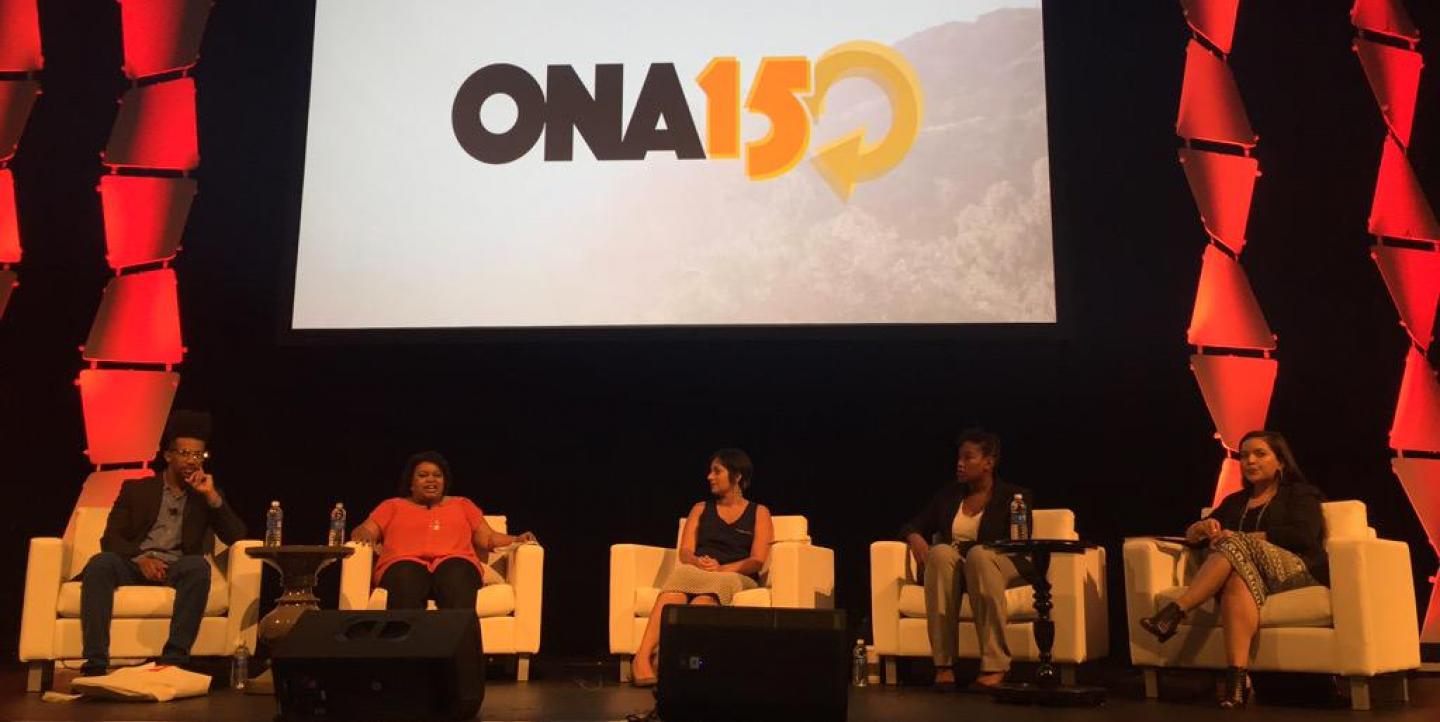Updated at 3:08 p.m. on Sept. 25, 2015
Los Angeles Times reporter Dexter Thomas Jr. made an astute observation during the Black Twitter and Beyond panel at this year’s Online News Association Conference — and it’s a statement that reflects a major diversity problem throughout today’s journalism industry.
"This is a very diverse segment of the conference here,” Thomas said, “but there are a lot of white folks that should be in this room right now, and they're not.”
“I think that says something,” he continued. “That says that we’re still up against a whole lot because there are a lot of people who are not very concerned with what we’re talking about in this room right now … It’s not that the talent’s not out there. It’s just that the opportunities aren’t there, and the interest isn’t there. People don’t think this is a big deal.”
At the panel, Thomas and ALL DIGITOCRACY founder Tracie Powell led a conversation on bringing underrepresented voices into the mass media.
“The best news organizations won’t have just one person of color in the newsroom, but more often than not that's the case,” Powell said. “Have a workforce that reflects the communities you are trying to cover.”
Additionally, it’s crucial for reporters to make connections and build trust with the people in their communities on a continuous basis, rather than waiting for a crisis to take place to begin covering them.
“Being out in the communities before a crisis happens, knowing people in the communities, not misrepresenting people — start there in order to gain that trust,” Powell said. “Get on the ground and report in your community.”
Because of the lack of minority journalists in newsrooms, many are finding ways to tell their stories online.
“Social media is igniting a conversation, lifting up a narrative and holding mainstream media accountable,” explained Tanzila Ahmed, whose #GoodMuslimBadMuslim podcast engages Muslim millennials with honest, engaging perspectives.
Ahmed cited the recent Ahmed Mohamed story, in which police arrested a 14-year-old Muslim boy after his teacher mistook his homemade clock for a bomb, as an example.
“In that situation, the mainstream media wouldn’t have picked it up if it weren’t for Twitter,” she said. “The community is making their own news already. If something is happening, they’re talking about it, and the mainstream media picks up on it later.”
The same is largely true for the Latino community, said Sharis Delgadillo, co-host of Latino Rebels Radio. Latinos are able to express their own internal dialogues through social media, and it’s an organic expression of their different realities, she said.
“The millennial generation and U.S. Latinos are more plugged in than anywhere else,” Delgadillo said. “[The web is] where they get to interact, participate and shape opinion. It’s where they find news stories the 5 o'clock news wouldn’t air. On the other hand, there’s a differentiation in language, where many Spanish-speaking immigrants in the U.S. typically go to the general corporate media conglomerate stations like Univision that are looked upon as a reliable source for immigration and Latin American news.”
While opportunities for Latinos and Muslims to express their stories online abound, it’s still difficult for these two communities to garner equal attention from the mass media.
“The [mainstream media] structure is very top-down, very corporate," Delgadillo said. "It seems like we're being marketed to instead of being employed. Instead of us being able to bring our stories to the table. It's very top-down, and it’s being manufactured to us."
There are sometimes windows of opportunity to tell authentic stories, Delgadillo added, “but you still have to break through glass ceilings.”
To listen to the full conversation, check out the session video.

